8 ’50s Fashion Tips That Totally Missed the Mark – And 8 Style Rules That Still Hold Up Today

Growing up with a grandmother who cherished her collection of 1950s fashion magazines was like having a window into a glamorous time machine. I’d spend hours flipping through those glossy pages, marveling at the perfectly coiffed hair, cinched waists, and full skirts that seemed to float with every step.
The post-war years weren’t just about rebuilding—they were about redefining beauty, elegance, and femininity in bold, structured ways. Fashion was serious business, with rules that were as crisp as the collars on those iconic shirtwaist dresses.
Women were expected to dress for every occasion, down to the gloves and hat. There were guidelines for everything: matching your purse to your shoes, ensuring hemlines hit the “right” spot, and never leaving the house without lipstick. While many of these standards feel hilariously outdated now (who has time to coordinate gloves?), some elements have quietly endured.
The timeless appeal of a flattering silhouette, the confidence of a well-tailored outfit, and the idea that how you dress can reflect how you feel—those are still with us. The ’50s may be long gone, but their influence lingers, stitched into the seams of modern fashion. And thanks to Grandma, I’ll always have a soft spot for a good A-line skirt.
1. Girdles for Everyone: The Uncomfortable Undergarment Mandate
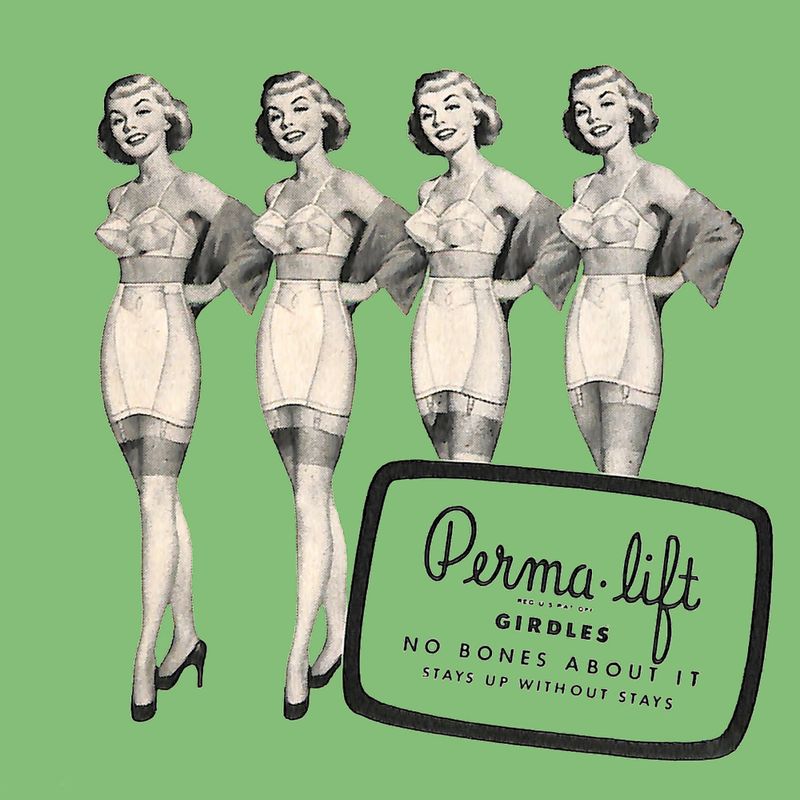
My grandmother once confessed she wore a girdle every single day of her married life—even during sweltering summer picnics! The 1950s beauty standard demanded unnaturally tiny waists, making these torturous undergarments practically mandatory for women of all sizes.
Department stores employed professional ‘corsetieres’ who measured women and insisted that proper ladies needed firm foundation garments regardless of their natural shape. Girls often received their first girdle as a coming-of-age gift, beginning a lifetime of compressed organs and restricted breathing.
Beyond the physical discomfort, these garments reinforced harmful messages about female bodies needing constant control and correction. Today’s body positivity movement has thankfully freed us from these binding expectations, allowing women to choose comfort and celebrating natural body shapes rather than artificially manipulated silhouettes.
2. White Gloves as Daily Necessities
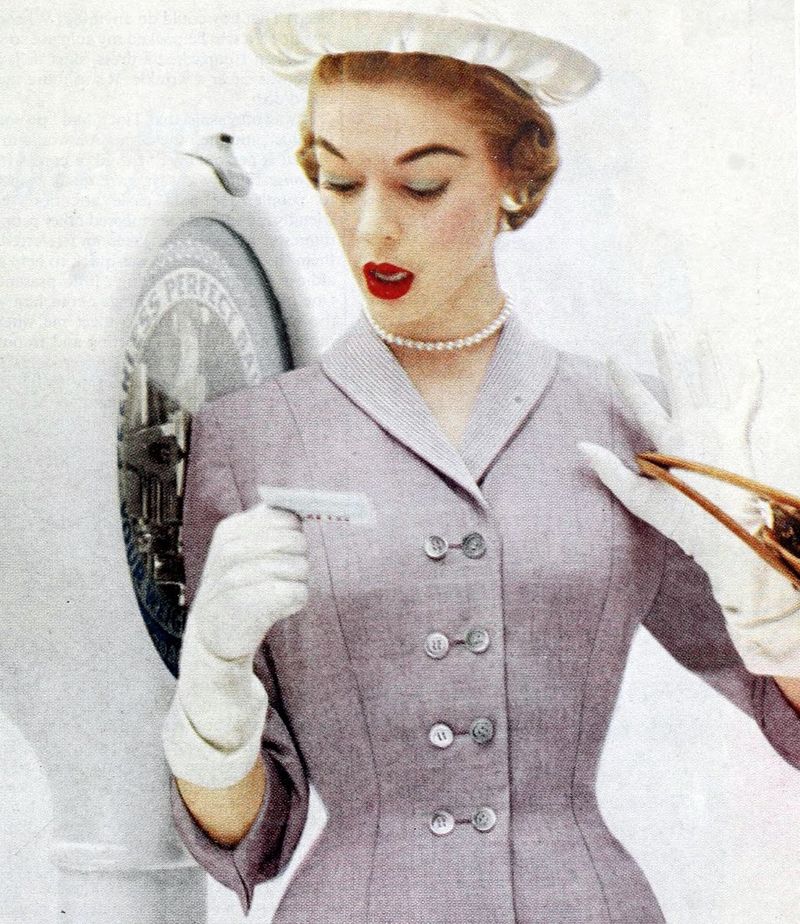
Last month, I discovered a box of my great-aunt Mildred’s pristine white gloves—dozens of pairs, each meticulously cleaned and stored! During the 1950s, no proper lady would dream of entering church, attending lunch, or shopping downtown without these impractical accessories.
Women carried multiple pairs daily, changing them throughout the day to ensure spotless appearance. The rigid etiquette dictated specific glove lengths for different occasions—wrist-length for daytime, opera-length for formal evenings. Maintaining these accessories required constant laundering, bleaching, and stretching over wooden forms.
The glove obsession created needless anxiety about appearing ‘ladylike’ while making everyday tasks like handling money or eating nearly impossible. Modern women appreciate the freedom of bare hands, saving gloves for truly cold weather rather than social conformity. Our fingers have been liberated from this fussy, function-limiting fashion mandate!
3. Hat Etiquette Gone Wild
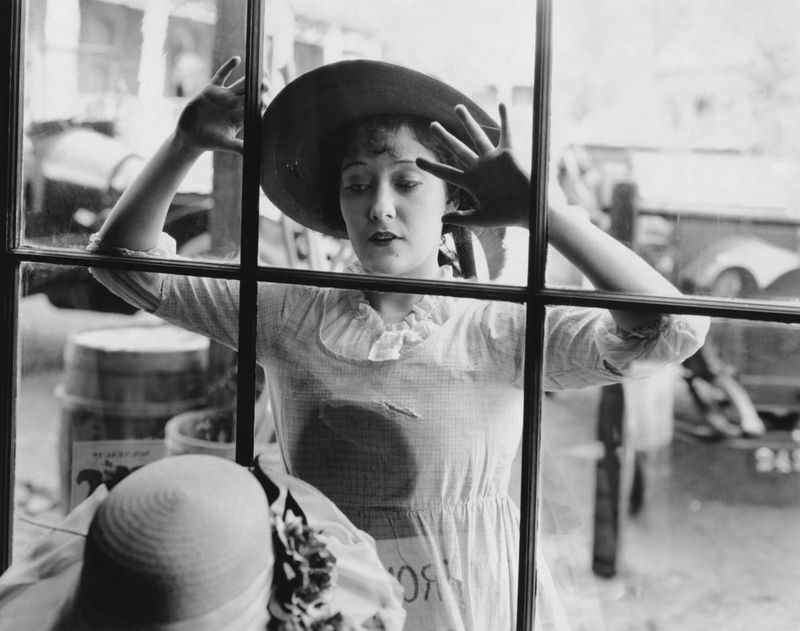
I stumbled across my grandmother’s 1952 etiquette book with eight full pages devoted solely to proper hat-wearing rules! The ’50s elevated millinery to an absurdly complicated social minefield where wearing the wrong hat style could apparently ruin your reputation overnight.
Women faced strict regulations: no straw hats after September 15th regardless of weather, cocktail hats required for afternoon events, and pillbox styles deemed inappropriate for tall women. Outdoor hats couldn’t come indoors (except department stores), and dinner hats couldn’t be removed even when uncomfortable.
These arbitrary rules created unnecessary stress while serving no practical purpose. Hat styles were used to judge women’s character and social standing rather than personal preference or weather conditions. Today’s approach to headwear is refreshingly practical—we wear hats for sun protection, warmth, or style without worrying about breaking mysterious social codes.
4. The Obsession with Matching Everything
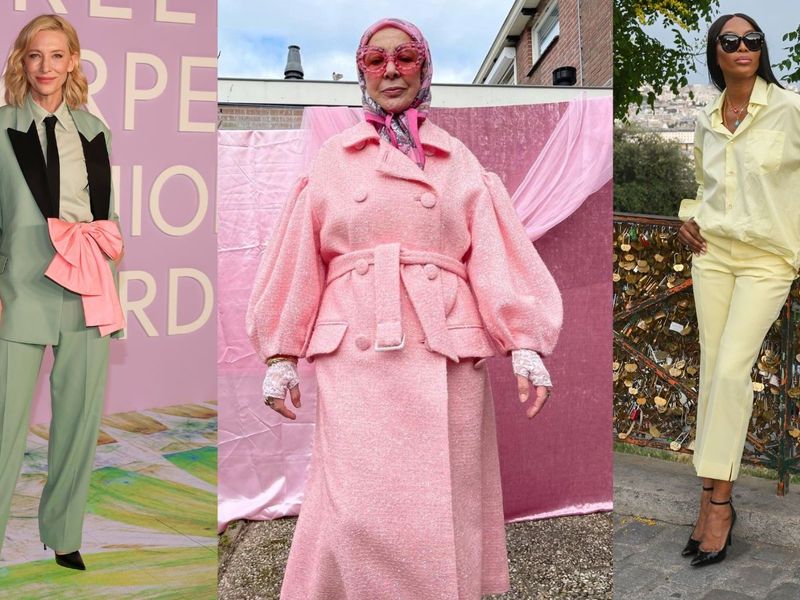
During a vintage shopping spree last year, I found a turquoise dress with its original matching shoes, purse, gloves, and hat still attached by tags—the holy grail of ’50s coordination! The decade’s fashion magazines preached the gospel of perfect color matching with evangelical fervor.
Women were expected to coordinate everything down to their earrings and nail polish in identical shades. This created a manufactured perfectionism that required purchasing complete ensembles rather than mixing versatile pieces. Fashion editors recommended holding fabric swatches of your outfits to ensure new purchases matched exactly.
This matchy-matchy approach limited creativity and personal expression while creating unnecessary expense. Today’s fashion celebrates intentional contrast, pattern mixing, and complementary (not identical) color stories. We’ve discovered that perfect matching often looks costumey rather than stylish, embracing the more sophisticated approach of coordinating pieces that speak to each other without being identical twins.
5. Rigid Gender-Specific Children’s Clothing
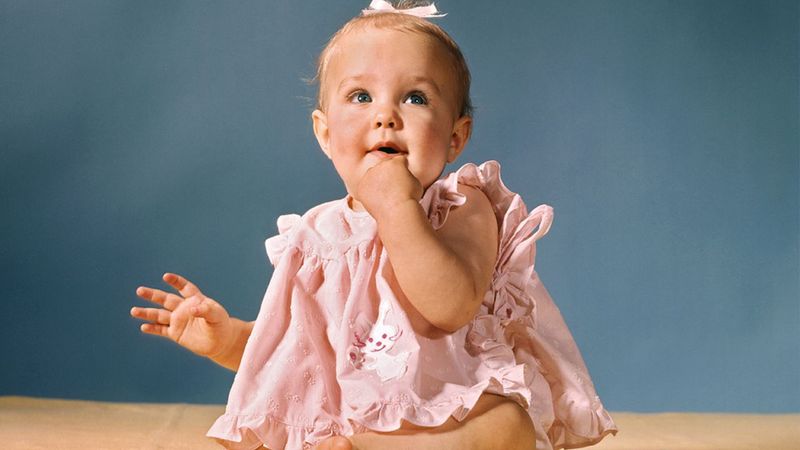
My mother recalls being sent home from kindergarten for wearing pants during a Minnesota winter when the temperature was below freezing! The 1950s enforced strict gender clothing rules on children regardless of comfort or practicality.
Little girls wore dresses exclusively—even for active play and cold weather—with scratchy petticoats and fragile Mary Janes that limited movement. Boys suffocated in miniature suits with bow ties for everyday activities like school and playground visits. Department stores strictly segregated children’s clothing sections with no color or style crossover permitted.
This rigid approach ignored children’s comfort, restricted physical activity, and reinforced limiting gender stereotypes from infancy. Modern parents appreciate the practicality of letting kids wear comfortable, durable clothing appropriate for play and weather conditions regardless of gender. Today’s children benefit from clothing designed for movement, self-expression, and functionality rather than restrictive social conformity.
6. The Bizarre Ban on Winter White
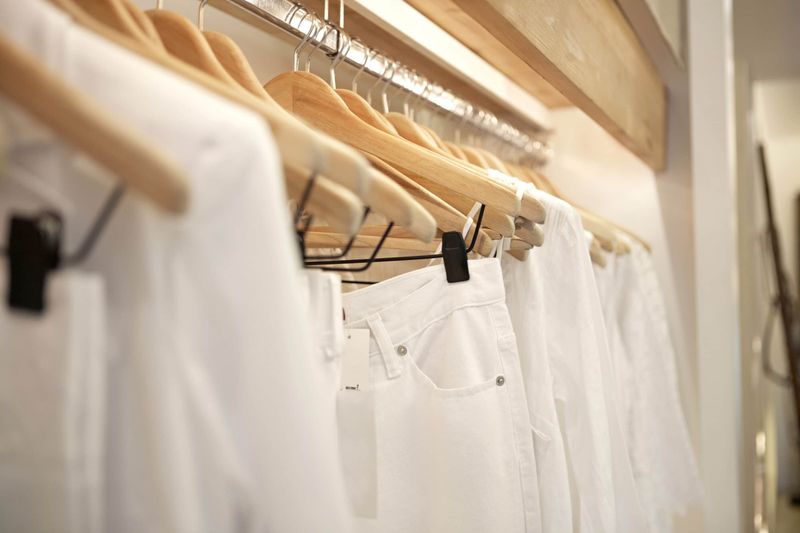
I once showed my grandmother a photo of my winter white wool coat, and she gasped as if I’d committed a serious fashion crime! The 1950s enforced a peculiar rule banning white clothing between Labor Day and Memorial Day, regardless of fabric weight or practicality.
This arbitrary seasonal color restriction originated with wealthy socialites but became mainstream fashion law. Women would literally pack away perfectly good clothing for months based solely on color, not fabric or function. Fashion magazines published reminder dates for the seasonal white switch, treating these transitions with the seriousness of religious holidays.
The rule ignored climate differences across regions and the practicality of winter-appropriate white fabrics like wool, cashmere, and heavy cotton. Modern fashion sensibly focuses on fabric weight and texture for seasonal appropriateness rather than color restrictions. We’ve realized the elegance of winter white and the absurdity of letting calendar dates dictate our color choices.
7. Suffocating Hairstyle Maintenance
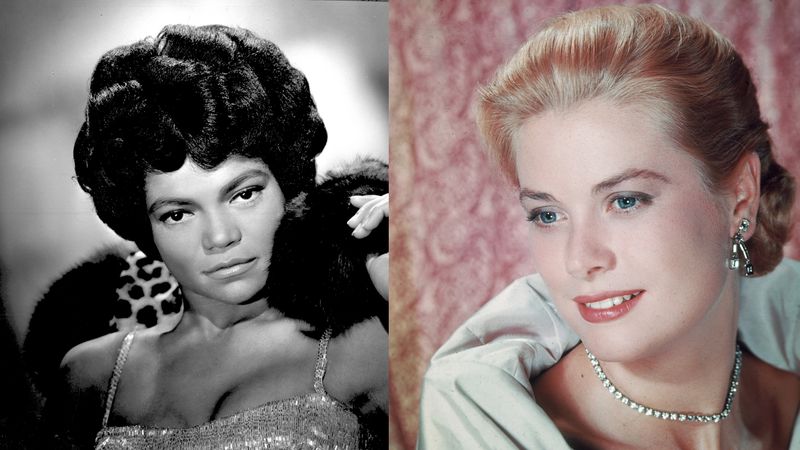
My aunt’s 1955 diary revealed she slept on painful pin curls every single night and visited the salon weekly for a fresh ‘set’—a far cry from my wash-and-go routine! The ’50s imposed exhausting hair maintenance schedules that dominated women’s lives.
Weekly salon appointments were considered essential, with elaborate styling processes involving harsh chemicals, scalp-scraping teasing, and industrial-strength hairsprays creating helmet-like constructions. Women slept on uncomfortable rollers, used smelly setting lotions, and avoided rain at all costs to preserve these rigid styles. Home maintenance included nightly brushing regimens (100 strokes minimum!) and elaborate wrapping procedures.
This high-maintenance approach prioritized artificial perfection over hair health and personal time. Today’s approach celebrates natural texture, manageable styling options, and products that enhance rather than fight our hair’s natural tendencies. We’ve embraced styles that look good without requiring constant vigilance or sacrificing comfort.
8. The Housewife Uniform Requirement
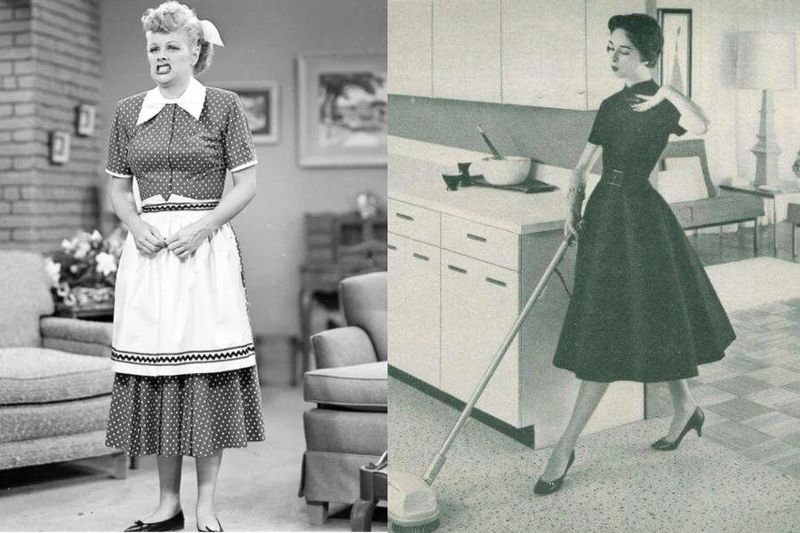
I laughed when my grandmother insisted she wore heels and a full face of makeup to vacuum in the 1950s—until I saw the family photos proving it! The era’s bizarre expectation that homemakers should maintain formal dress standards while doing household chores created impractical ‘housewife uniforms.’
Women’s magazines advised wearing ‘housedresses’ with stockings, girdles, and even jewelry while cooking and cleaning. Advertising depicted mothers in pressed dresses and pearls while scrubbing floors or doing laundry. This standard required multiple outfit changes daily and prioritized appearance over comfort and practicality.
The housewife uniform reinforced the idea that women’s primary value was decorative, even in private spaces. Modern approaches to home attire sensibly prioritize comfort and function, recognizing that practical clothing doesn’t diminish one’s worth or professionalism. We’ve recognized the absurdity of performing physical labor in restrictive clothing for an audience that doesn’t exist.
9. Timeless Treasure: The Versatile Cardigan
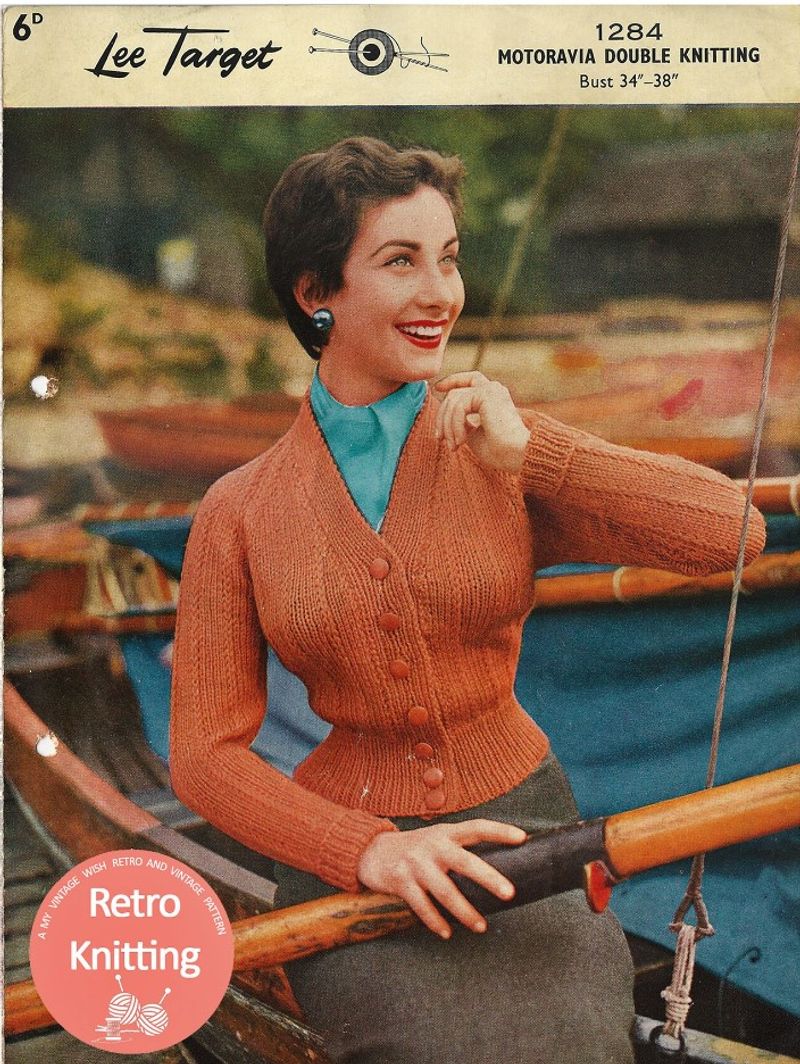
My favorite inheritance from my stylish grandmother wasn’t jewelry but her collection of perfectly maintained cashmere cardigans from 1958! The cardigan sweater represented the best of ’50s practical elegance and remains a wardrobe essential today.
Originally popularized by Coco Chanel in the early twentieth century, the ’50s elevated this buttoned sweater to wardrobe staple status. Women appreciated its versatility—worn buttoned as a modest top, open as a light layer, or draped over shoulders for evening events. The cardigan offered warmth without bulk and structure without constriction.
Modern fashion continues to celebrate this adaptable piece, with contemporary versions ranging from oversized and casual to fitted and formal. The cardigan’s enduring appeal lies in its perfect balance of comfort and polish, allowing easy transition between settings. This ’50s staple proves that truly functional design transcends trends, remaining relevant across decades.
10. Still Stunning: The Fit-and-Flare Silhouette
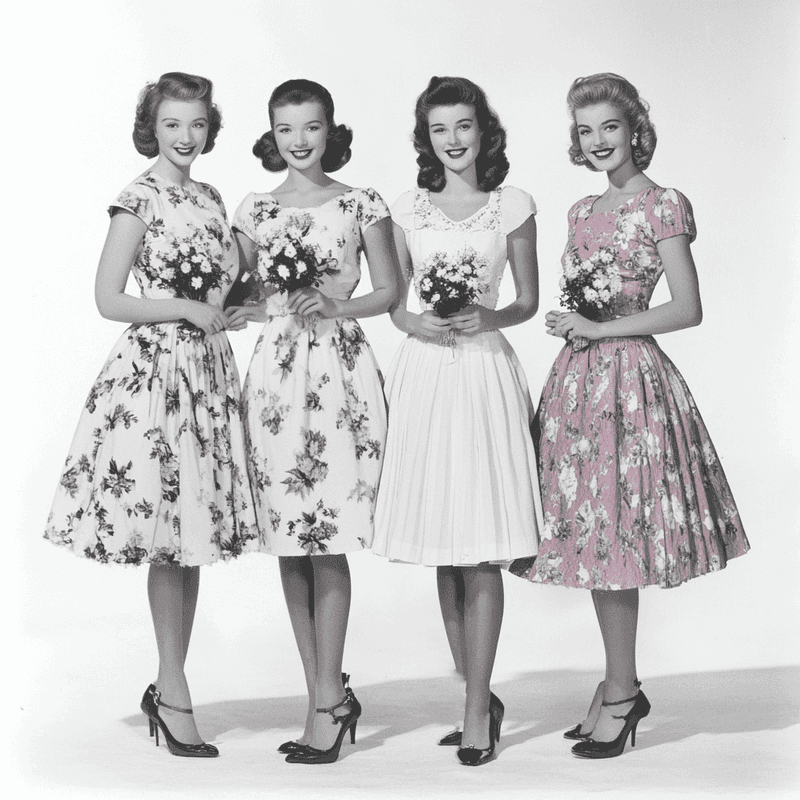
Last summer, I wore my mother’s preserved 1955 fit-and-flare dress to a garden party, receiving more compliments than on any modern outfit I’ve ever purchased! This iconic silhouette—fitted through the bodice and waist with a generously flared skirt—remains universally flattering decades later.
The ’50s popularized this shape through household names like Dior’s New Look and everyday patterns from companies like Butterick and Simplicity. The genius of the design lies in its optical illusion: creating or emphasizing an hourglass figure regardless of the wearer’s natural shape. The proportions work mathematical magic, making waists appear smaller and creating balanced volume.
Contemporary designers continually revisit this silhouette because it combines timeless elegance with practical comfort—the flared skirt allows movement while the fitted top provides structure. Unlike many period-specific styles, the fit-and-flare transcends decades because it celebrates feminine curves without restricting them, proving that thoughtful design outlasts fleeting trends.
11. Enduring Classic: Tailored Trench Coats

During a rainstorm last month, I grabbed my vintage 1950s London Fog trench coat—and realized good design truly is timeless when a teenager asked where I’d bought my ‘new’ coat! The ’50s perfected the trench coat’s practical elegance, creating a silhouette that remains virtually unchanged today.
Originally designed for military use, the civilian trench coat boomed in post-war America with its flattering belted waist, protective double-breasted closure, and versatile mid-length. The ’50s version added thoughtful details like deep pockets, water-resistant fabrics, and removable linings that made the garment functional year-round.
Modern trench coats maintain these practical features while offering updated fabrics and color options. The design’s enduring appeal comes from its perfect marriage of function and style—protecting from elements while flattering the figure. This ’50s staple proves that when clothing solves real problems while looking good, it transcends the limitations of trend cycles.
12. Perpetually Polished: Ballet Flats
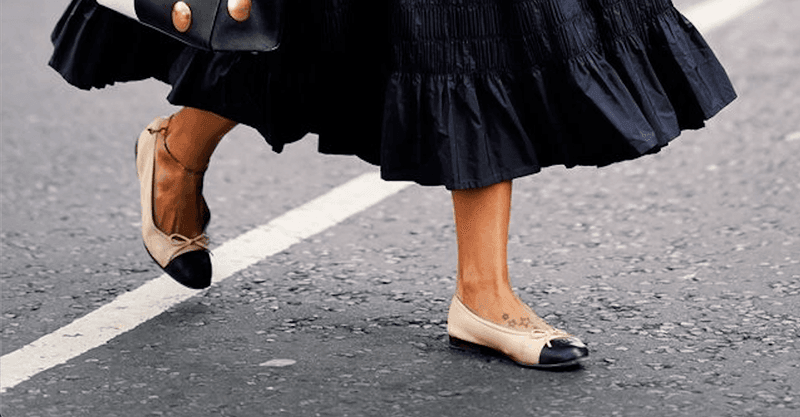
I’ll never forget finding my first pair of Audrey Hepburn-inspired ballet flats at age 16—they made me feel instantly sophisticated yet comfortable enough to wear all day! These simple shoes originated in dance studios but became fashion staples during the 1950s as women sought elegant alternatives to heels.
Popularized by style icons like Brigitte Bardot and Grace Kelly, ballet flats offered a revolutionary combination of comfort and elegance previously unavailable in women’s footwear. The ’50s versions featured quality construction with leather soles, supportive arches, and subtle details like tiny bows or cap toes that elevated their simple design.
Today’s fashion continues to embrace ballet flats for the same reasons they initially succeeded—they transition effortlessly between casual and formal settings while allowing natural movement. Unlike many fashionable shoes, they don’t sacrifice comfort for style. This ’50s footwear innovation demonstrates that when fashion aligns with the body’s natural needs, it creates classics that transcend decades.
13. Forever Chic: Statement Red Lipstick

My beauty awakening came at thirteen when my grandmother taught me to apply her signature red lipstick—the same shade she’d worn since 1954! The ’50s elevated red lipstick from makeup to cultural statement, creating a beauty tradition that continues to signify confidence and polish.
The post-war era embraced vibrant reds as symbols of renewed prosperity and feminine strength. Women developed signature shades they wore consistently—Elizabeth Arden’s Victory Red, Revlon’s Fire and Ice, and Besame’s Red Velvet became personal trademarks. The precision application technique (lining, filling, blotting, reapplying) created long-lasting color that became associated with meticulous self-presentation.
Modern makeup still celebrates red lipstick as the ultimate confidence booster and outfit elevator. While application techniques have simplified, the psychological impact remains unchanged—a swipe of red instantly signals self-assurance and attention to detail. This ’50s beauty staple proves that some expressions of personal style transcend generations.
14. Still Sophisticated: Pearls as Everyday Elegance

For my college graduation, my aunt gifted me her 1950s pearl necklace with a note saying, ‘Some treasures never go out of style’—wisdom that proves truer each time I wear them! The ’50s democratized pearls from occasional luxury to everyday elegance, establishing them as versatile accessories that elevate any outfit.
Previously reserved for formal occasions, pearls became daytime staples through more affordable cultured versions and celebrity influence (think Jackie Kennedy and Audrey Hepburn). Women wore simple strands with everything from casual sweaters to business attire, appreciating their ability to add polish without ostentation.
Contemporary fashion continues to embrace pearls for their remarkable versatility and flattering light-reflecting properties. Modern styling maintains the ’50s appreciation for their understated elegance while adding fresh contexts—paired with denim, incorporated into modern jewelry designs, or worn in unexpected combinations. This ’50s accessory staple demonstrates that true elegance lies in simplicity rather than trends.
15. Timelessly Terrific: Full Eyebrows
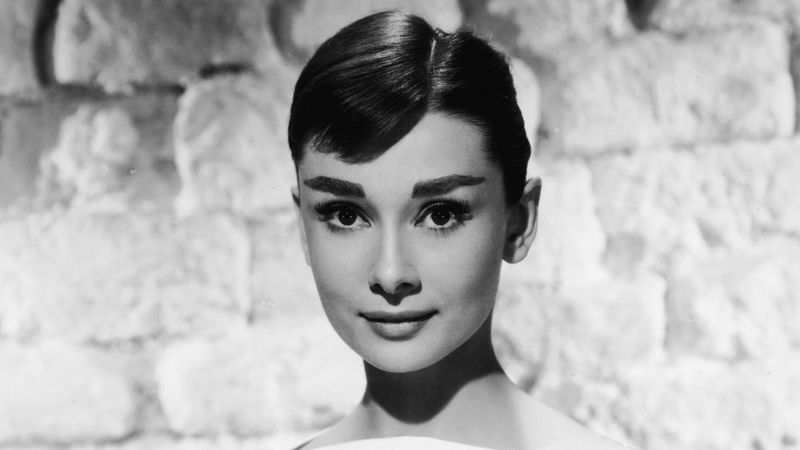
I spent years overplucking my eyebrows before discovering my grandmother’s 1955 beauty magazines celebrating the full, natural brows I’d been fighting against! The ’50s embraced natural brow shapes during a decade otherwise obsessed with artifice—a surprisingly modern approach that’s returned to favor today.
While Hollywood stars like Elizabeth Taylor and Audrey Hepburn showcased slightly groomed but naturally full eyebrows, average women were encouraged to maintain their natural arch and thickness. ’50s beauty guides recommended minimal shaping—removing only obvious strays while preserving the brow’s natural contour. This approach emphasized each woman’s unique facial structure rather than forcing conformity to a single ideal.
Contemporary beauty standards have returned to this natural approach after decades of over-tweezed trends. We’ve rediscovered what the ’50s already knew—that natural brows balance facial features and age gracefully. This ’50s beauty principle proves that sometimes the most enduring approach is working with natural features rather than against them.
16. Persistently Perfect: The Crisp White Shirt
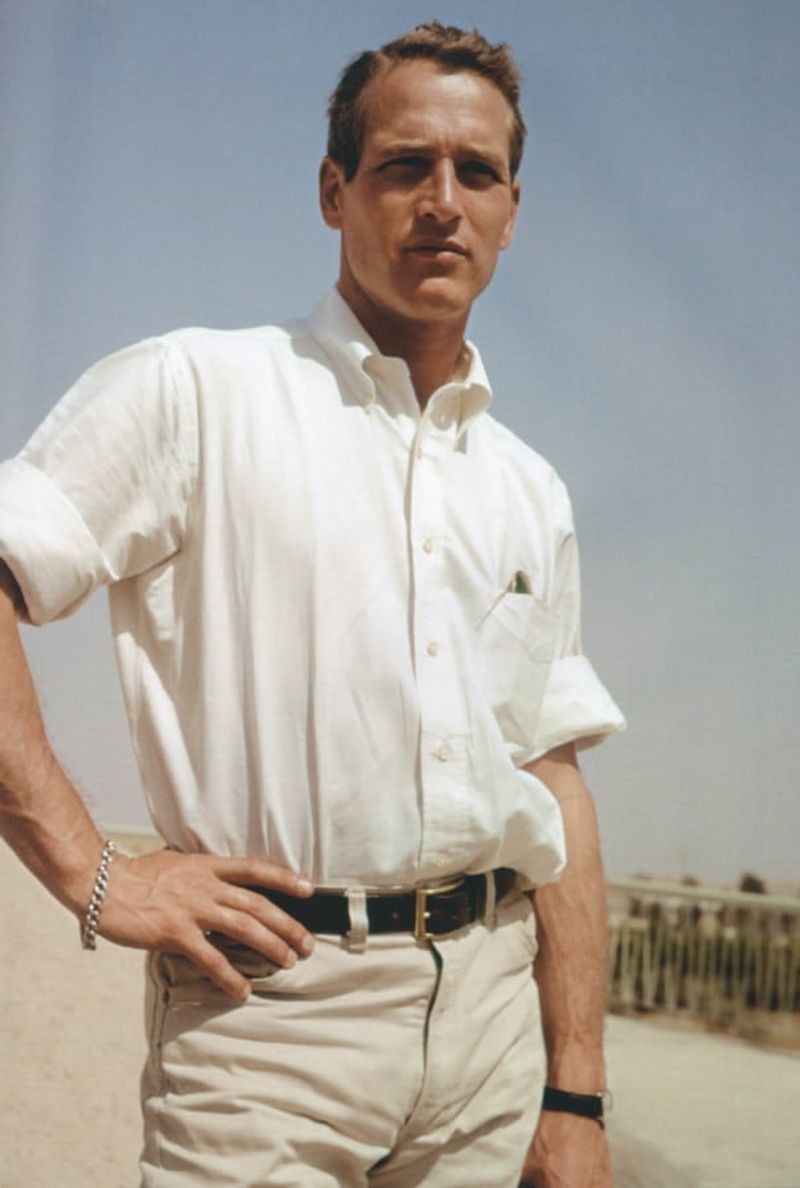
My first professional wardrobe investment was a high-quality white button-down shirt—directly inspired by photos of my grandfather looking impossibly polished in his 1950s office attire! The white shirt represented the decade’s approach to refined simplicity, establishing itself as a wardrobe foundation that transcends gender and occasion.
The ’50s elevated this basic through quality details—mother-of-pearl buttons, precise collar construction, and luxurious cotton that improved with washing. Both men and women incorporated white shirts into their wardrobes, appreciating their chameleon-like ability to appear professional under suits, casually elegant with jeans, or formally appropriate with evening wear.
Modern fashion continues to celebrate the white shirt’s remarkable versatility and flattering simplicity. Contemporary styling maintains the ’50s appreciation for its clean lines while finding fresh contexts—oversized with leggings, knotted at the waist, or layered under jumpsuits. This ’50s essential proves that thoughtful basics form the backbone of truly timeless wardrobes.
